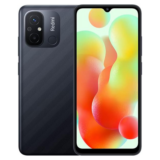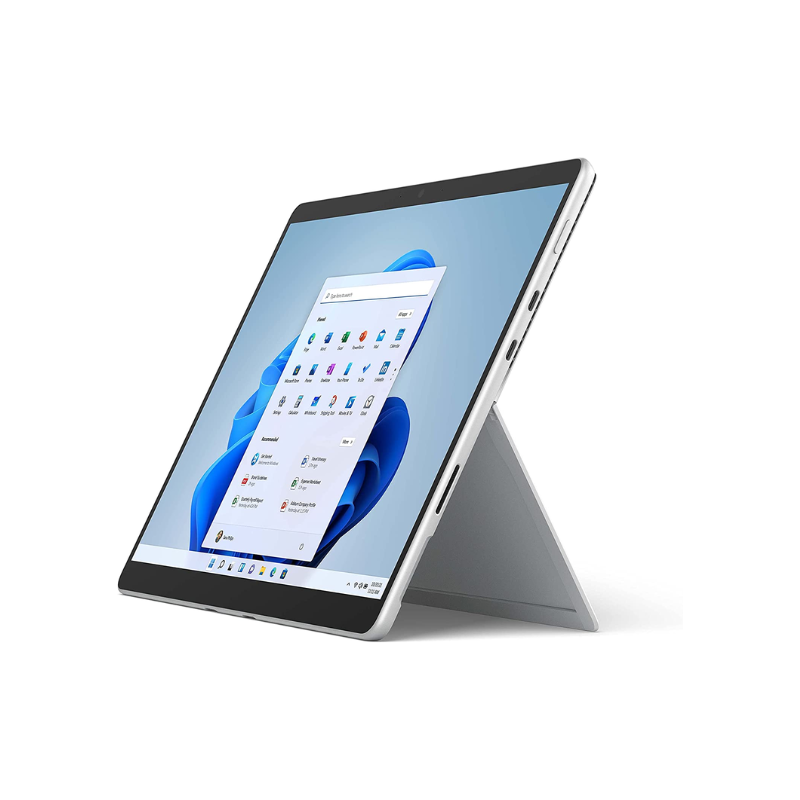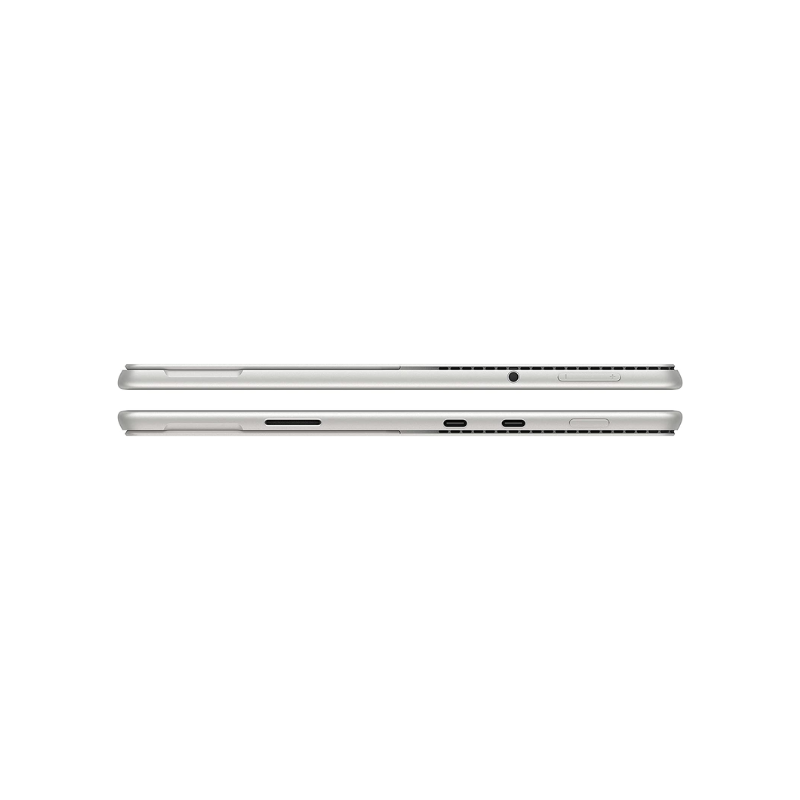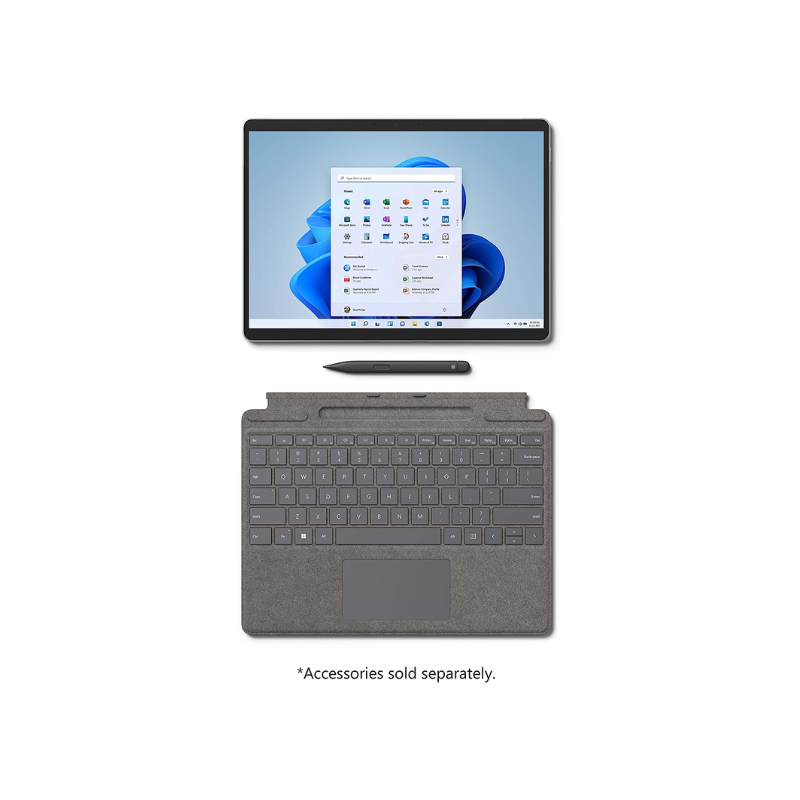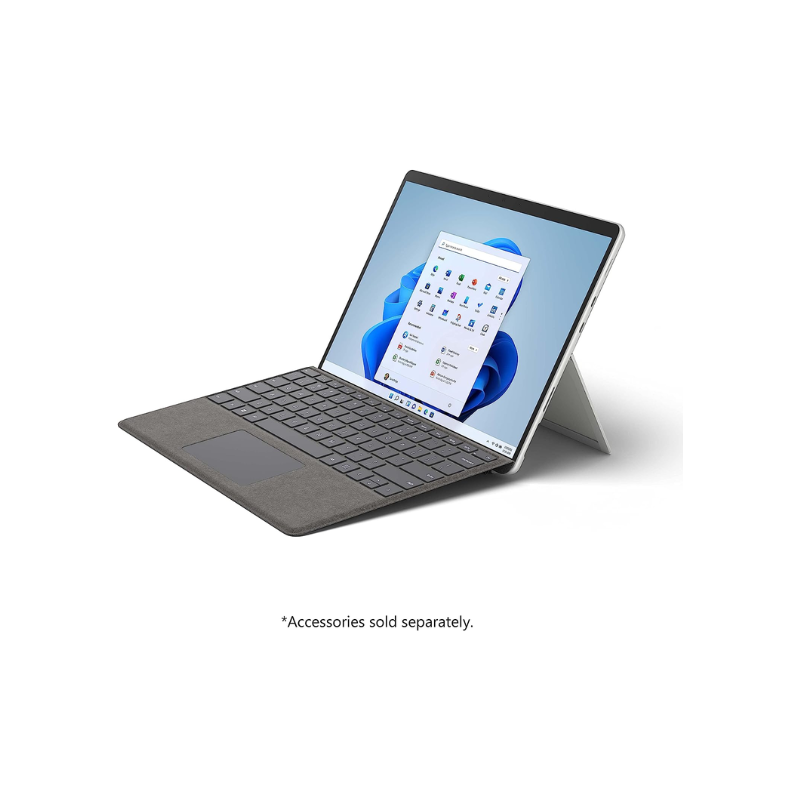- Your cart is empty
- Continue shopping
Surface Pro 8 Laptop With 13-Inch PixelSense Display, 11th Gen Core i5 1135G7 Processer/8GB RAM/256GB SSD/Intel UHD Graphics/Windows 11 /International Version English Graphite
د.إ 5,799.00 Original price was: د.إ 5,799.00.د.إ 5,499.00Current price is: د.إ 5,499.00.
Overview
Highlights
- Virtually edge-to-edge PixelSense Flow touch display, with up to 120Hz refresh rate
- WiFi 6 for ultra-fast bandwidth
- Create the ultimate productivity setup with Thunderbolt 4 ports
- Laptops are used in a variety of settings such as at work in education for playing games web browsing for personal multimedia and for general home computer use
- The main advantage of a laptop as compared with a stationary computer is its mobility and straightforward to use with none additional devices
Overview
A laptop, laptop computer, or notebook computer is a small, portable personal computer (pc) with a screen and alphanumeric keyboard. Laptops typically have a clam shell form factor with the screen mounted on the inside of the upper lid and the keyboard on the inside of the lower lid, although 2-in-1 pcs with a detachable keyboard are often marketed as laptops or as having a laptop mode.laptops are folded shut for transportation, and thus are suitable for mobile use.they are so named because they can be practically placed on a person’s lap when being used. Today, laptops are used in a variety of settings, such as at work, in education, for playing games, web browsing, for personal multimedia, and for general home computer use.as of 2022, in american english, the terms laptop computer and notebook computer are used interchangeably;in other dialects of english, one or the other may be preferred. Although the terms notebook computers or notebooks originally referred to a specific size of laptop (originally smaller and lighter than mainstream laptops of the time),the terms have come to mean the same thing and notebook no longer refers to any specific size.laptops combine many of the input/output components and capabilities of a desktop computer, including the display screen, small speakers, a keyboard, data storage device, pointing devices (such as a touch pad or pointing stick), with an operating system, a processor (central processing unit (cpu)) and memory into a single unit. Most modern laptops feature integrated webcams and built-in microphones, while many also have touchscreens. Laptops can be powered either from an internal battery or by an external power supply from an ac adapter. Hardware specifications, such as the processor speed and memory capacity, significantly vary between different types, models and price points.design elements, form factor and construction can also vary significantly between models depending on the intended use. Examples of specialized models of laptops include rugged notebooks for use in construction or military applications, as well as low production cost laptops such as those from the one laptop per child (olpc) organization, which incorporate features like solar charging and semi-flexible components not found on most laptop computers. Portable computers, which later developed into modern laptops, were originally considered to be a small niche market, mostly for specialized field applications, such as in the military, for accountants, or traveling sales representatives. As portable computers evolved into modern laptops, they became widely used for a variety of purposes.
Specifications
| Operating System Version | Windows 11 |
| Display Resolution Type | Full HD |
| SIM Type | Normal SIM |
| Connection Type | Wifi |
| Processor Speed | 2.4 GHz |
| Operating System | Windows |
| RAM Size | 8 GB |
| Laptop Weight | Upto 1 Kg |
| Battery Size | 5039 MAh |
| Storage Type | SSD |
| Internal Memory | 256 GB |
| Product Weight | 0.88 KG |
| Display Type | PixelSense |
| Graphics Memory Name | Intel Iris/Iris Plus Graphics |
| Version | International Version |
| Screen Size | 13 In |
| Display Resolution | 2880×1800 |
| Primary Camera Resolution | 2 MP |
| Colour Name | Graphite |
| Processor Type | Core I5 |
| Laptop Type | Convertible 2 In 1 |
| Operating System Number | Windows 11 |
| Processor Version Number/Generation | 11th Gen |
| Graphics Memory Version | Intel Iris Xe Graphics |
| What’s In The Box | Surface Pro 8 Power Supply Quick Start Guide Safety And Warranty Documents |
| Number Of Cores | Quad Core |
| Camera Type | Primary Camera |
| Wireless | Wireless |
| Audio Jack | 3.5 Mm |
| Battery Type | Lithium Ion |
| RAM Type | LPDDR4X |
| Processor Brand | Intel |
| External Graphics | Graphic Card |
| Screen Features | Eye Care |
| Refresh Rates | 60Hz |
| Monitor Response Time | 16 Ms & Above |
| Usage Type | Personal |
| Average Battery Life | 16 Hours |
| Keyboard Language | English |
| Product Length | 28.7 Cm |
| Product Height | 0.9 Cm |
| Product Width/Depth | 20.8 Cm |
| Graphic Memory | 0 GB |
| HDD Rotation | 5400 Rpm |
| Features | Bluetooth, Multi-Touch, Built In Speaker, Personal, Lithium Ion |
| Model Number | 8PQ-00027 |
| Model Name | Surface Pro 8 |
| Pixels Per Inch | 267 |
| HDMI Output | No |
| Adobe Flash Compatible | No |
| Number Of USB Ports | 2 |
| SD Card Slot | No |
| Number Of HDMI Ports | 0 |
| Processor Version | Core I5-1135G7 |
Reviews
There are no reviews yet.
Only logged in customers who have purchased this product may leave a review.


